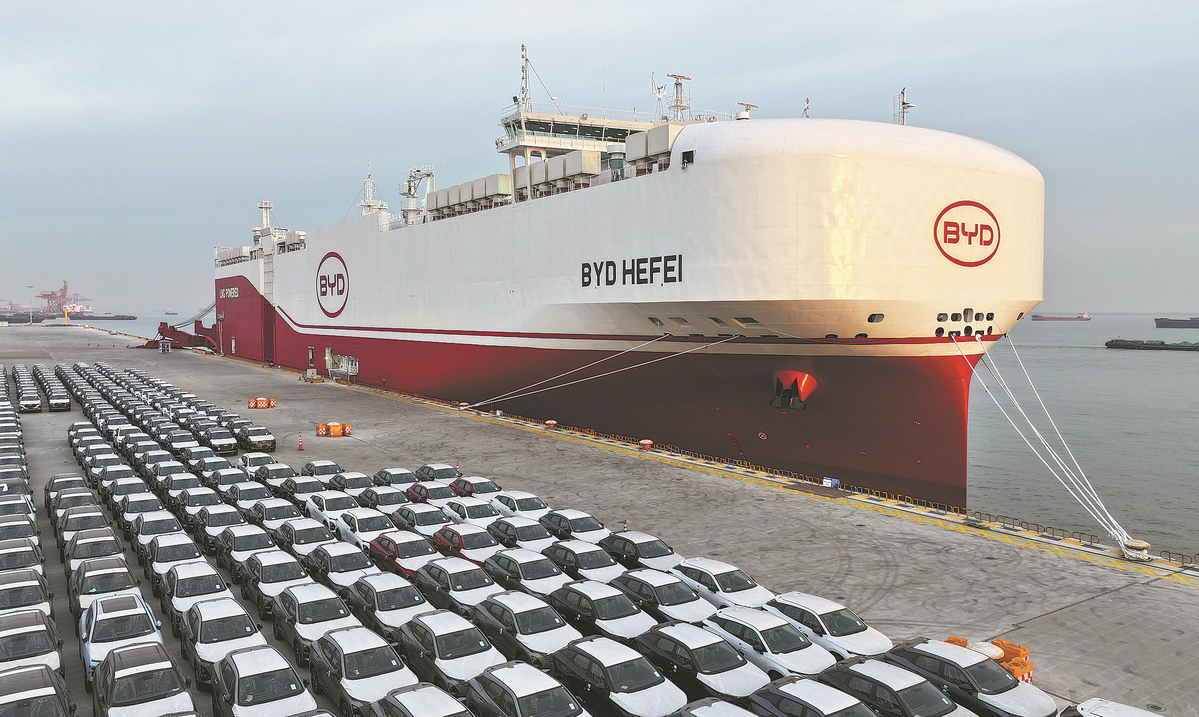Eco-friendly exports rosy despite barriers

China's green trade is set for continued growth, said analysts, emphasizing the necessity of diversifying supply chains to mitigate future geopolitical risks.
The remarks came after China's General Administration of Customs said recently that China led global green trade with electric vehicle exports exceeding 2 million units for the first time last year. The country also witnessed a surge in exports of electric motorcycles and bicycles, surpassing a value of 40 billion yuan ($5.5 billion) for the first time.
Last year, exports of wind power generation units from China grew 71.9 percent, while solar products maintained export levels exceeding 200 billion yuan for the fourth consecutive year. Additionally, exports of lithium batteries reached a record 3.91 billion units.
Experts highlighted the strong global demand for green transition, adding a possible increase in demand for new energy facilities may propel their imports from China this year.
"We are more positive than consensus on global demand for wind, solar and power grid equipment. We believe growth could accelerate in the first half of this year and our 2025 demand growth forecasts for wind, solar and grid equipment demand are 12 percent, 20 percent and 10 percent higher, respectively, than consensus of around 0-5 percent," said Ronald Wu, an analyst from financial services provider UBS.
"We believe the impact of an additional 10 percent US tariff on these sectors in China would be limited," Wu said.
Despite the significant and growing global demand for green transition, seizing international trade opportunities poses challenges for Chinese enterprises. Wu said geopolitical tensions and international trade relations are likely to have negative impacts on trade.
"An example is the establishment of carbon or environmental border tax mechanisms by various countries and regions, with the European Union expected to implement its Carbon Border Adjustment Mechanism by 2026, covering six industries such as steel, aluminum and hydrogen," he said.
Lin Boqiang, head of the China Institute for Studies in Energy Policy at Xiamen University, said that future trade barriers will become more severe, continuously affecting China's renewable energy product exports. While China has made significant progress in making renewable energy like photovoltaics and wind power more affordable to a wider range of users, trade protectionist measures by economies like the United States and the EU have created challenges.
"To address escalating trade barriers, Chinese renewable energy enterprises can diversify their strategies. By expanding into emerging markets such as Southeast Asian countries that haven't been impacted by US tariffs, Africa, the Middle East and Latin America, companies can mitigate risks and cater to more global demand," Lin said.
Ken Liu, head of mainland and Hong Kong utilities and renewables at UBS, highlighted the significant demand for Chinese power infrastructure products in Europe and the Middle East, particularly as the latter region is transitioning from heavy oil economies to ones with more diverse sources of income, driving substantial growth in power infrastructure needs.
